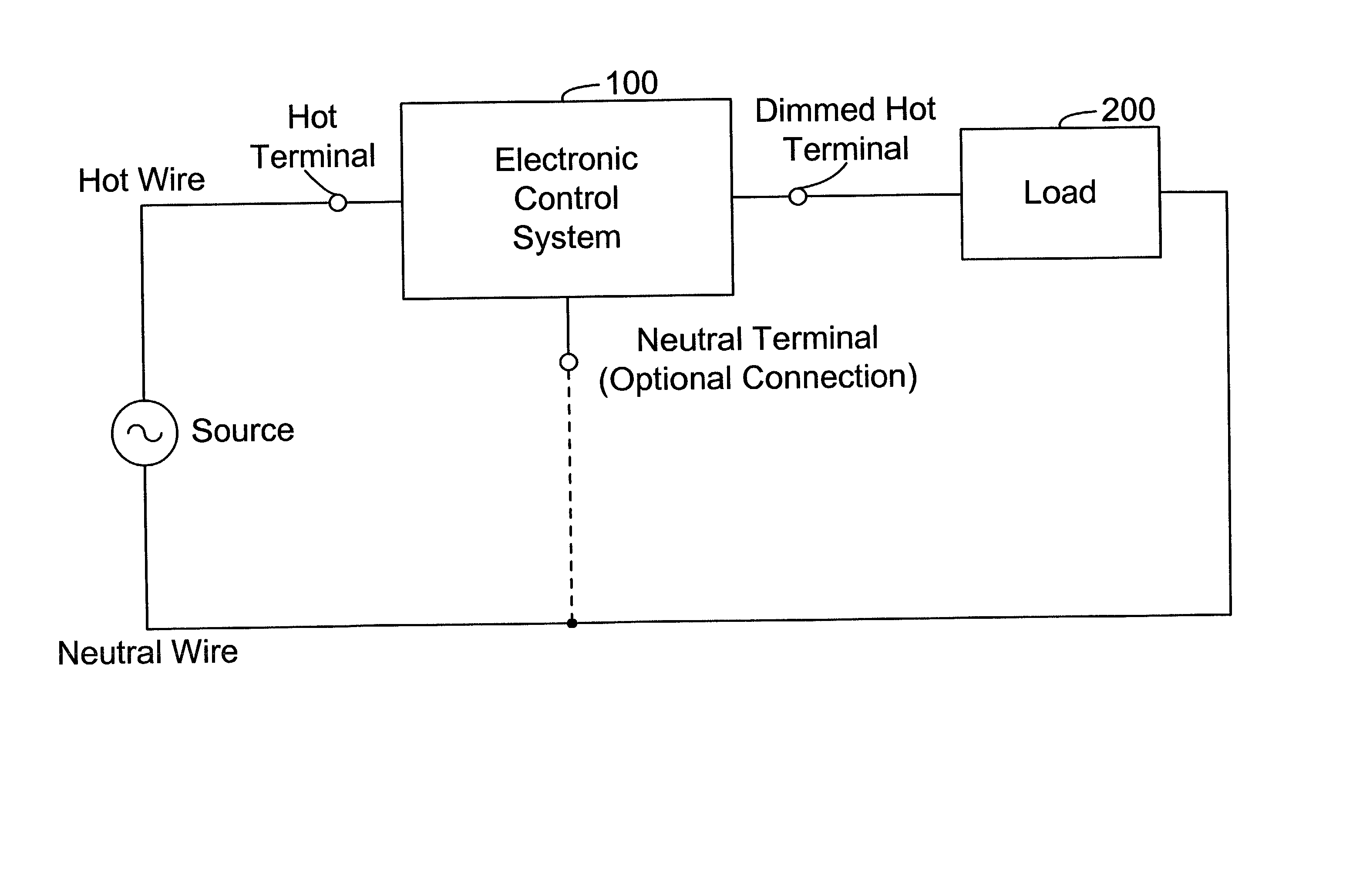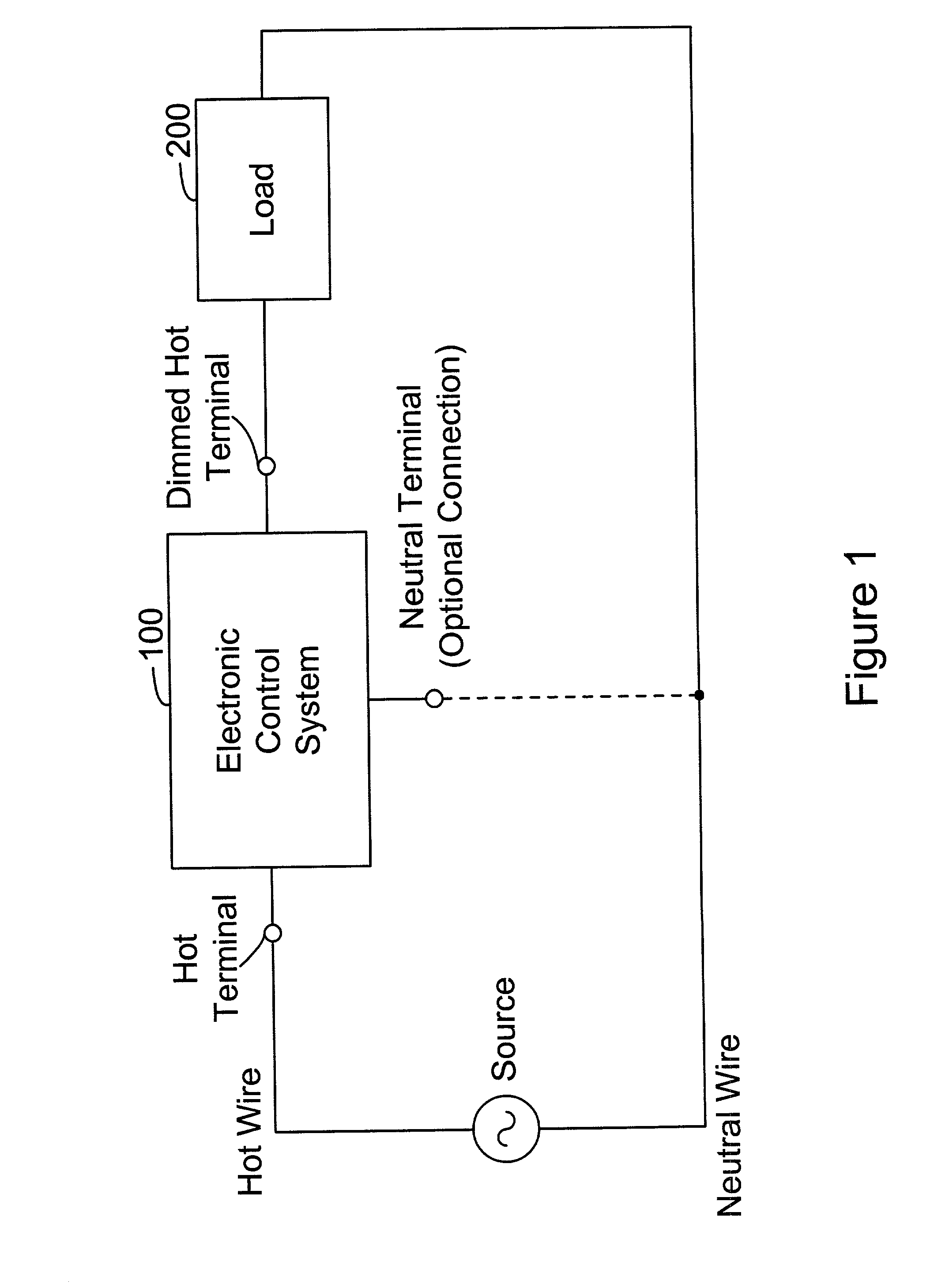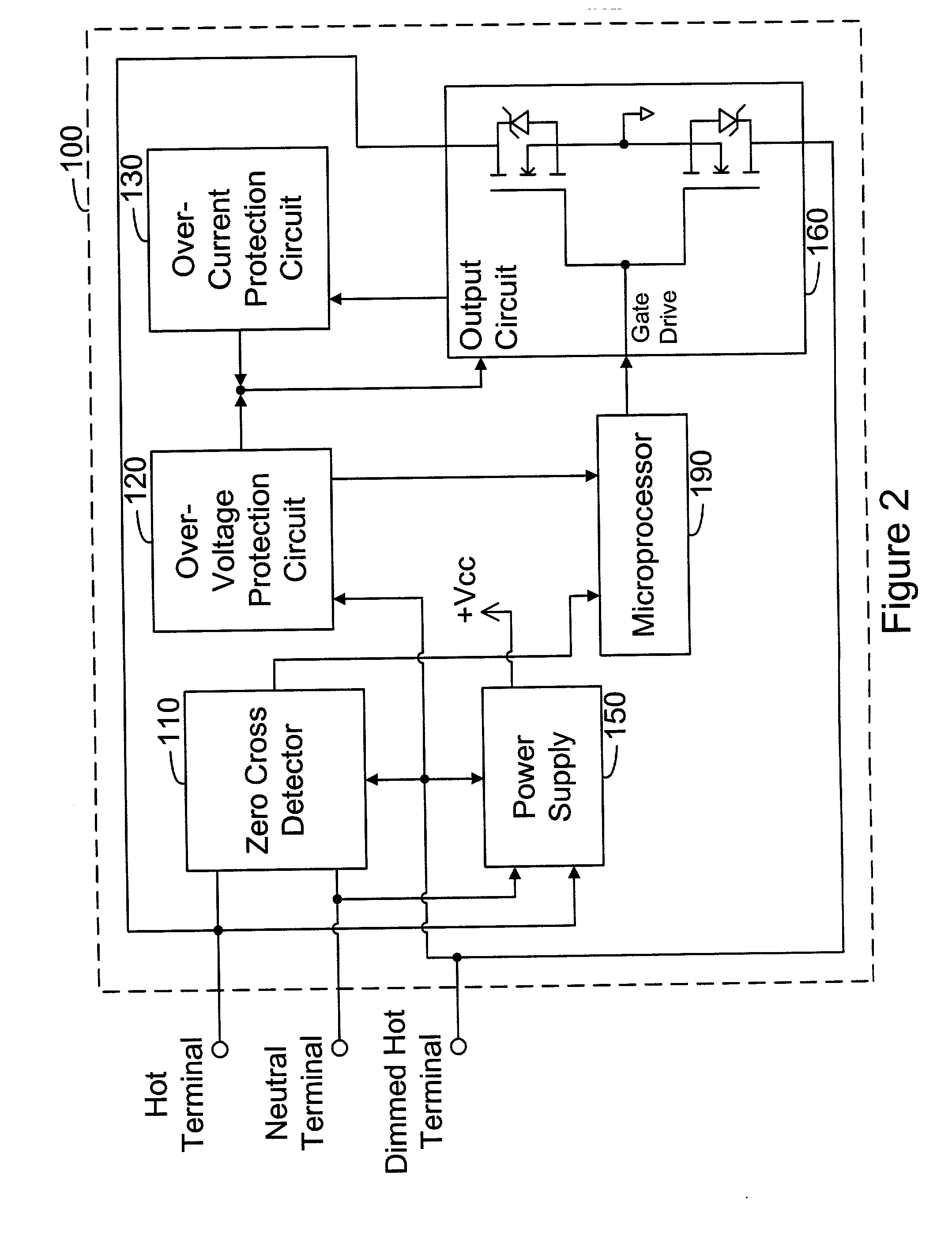Electronic control systems and methods
a technology of electronic control system and control system, applied in the direction of pulse manipulation, pulse technique, instruments, etc., can solve the problems of high average input current, excessive power to be dissipated in the power supply, and often compromised power supply and timing circuit operation,
- Summary
- Abstract
- Description
- Claims
- Application Information
AI Technical Summary
Benefits of technology
Problems solved by technology
Method used
Image
Examples
Embodiment Construction
[0036] An embodiment of the present invention is directed to an electronic control system and in particular a lighting controller that can automatically determine whether to operate in two wire mode or three wire mode (i.e., to operate with or without a neutral wire connection). The controller senses whether there is a neutral wire connection to the electronic control system and adjusts its operation accordingly. The electronic control system automatically selects and continuously monitors the connection scheme. An embodiment is directed toward an electronic control system such as a lighting controller or dimmer; however, the invention has broader application in other electronic controls.
[0037] FIG. 1 is a high level block diagram of an exemplary system in accordance with the present invention. An electronic control system 100, also referred to herein as a lighting controller or a dimmer, is preferably connected between an input source, such as an AC line voltage, and a first termin...
PUM
 Login to View More
Login to View More Abstract
Description
Claims
Application Information
 Login to View More
Login to View More - R&D
- Intellectual Property
- Life Sciences
- Materials
- Tech Scout
- Unparalleled Data Quality
- Higher Quality Content
- 60% Fewer Hallucinations
Browse by: Latest US Patents, China's latest patents, Technical Efficacy Thesaurus, Application Domain, Technology Topic, Popular Technical Reports.
© 2025 PatSnap. All rights reserved.Legal|Privacy policy|Modern Slavery Act Transparency Statement|Sitemap|About US| Contact US: help@patsnap.com



